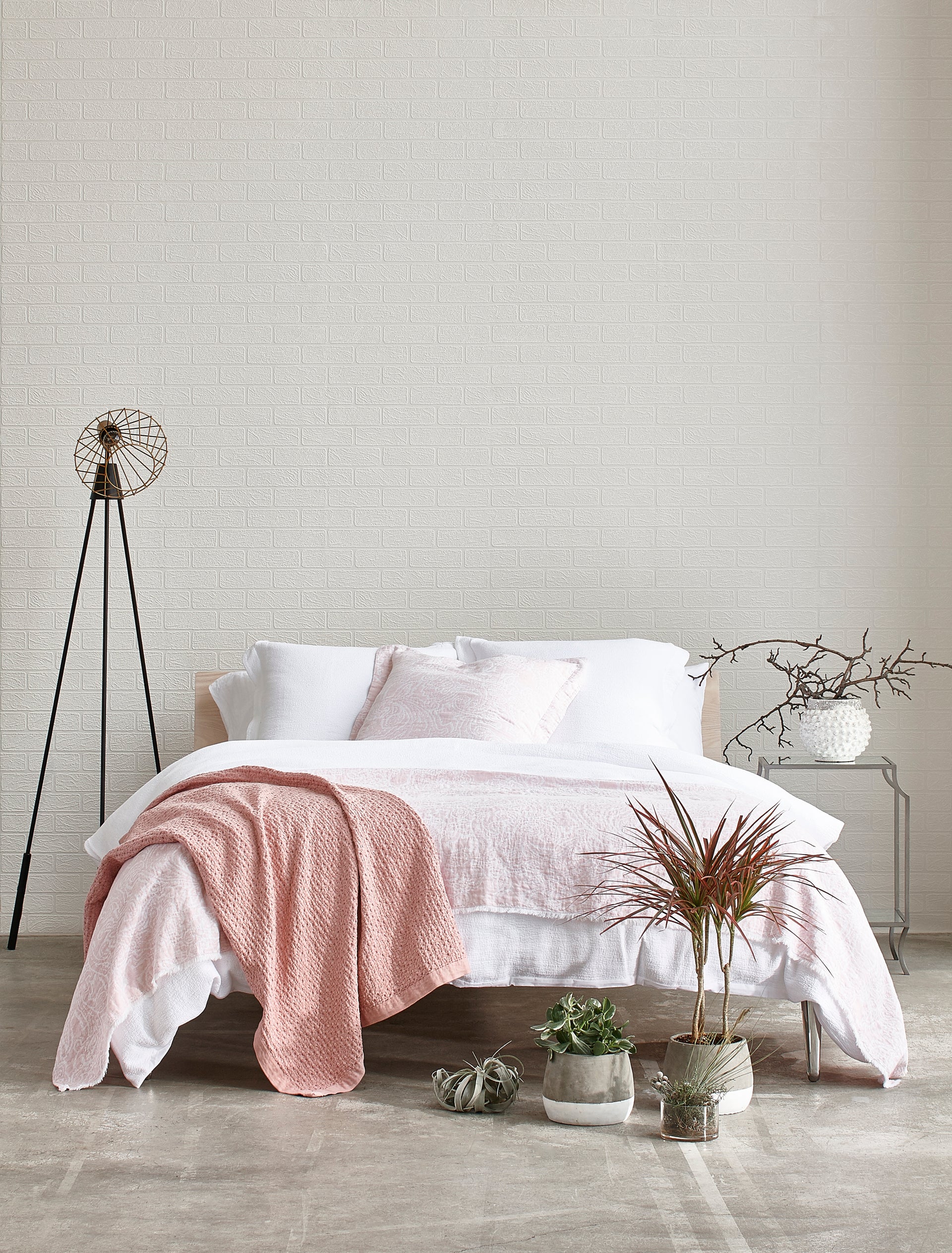
Plants are having a moment. Flip through any home decor magazine or designer's portfolio, and you'll see plants adorning every room of the house. While plants make a major design statement and add instant cool to any space, their real benefit lies in the health benefits they provide - and they can even help you get a better night's sleep.
We know what you're thinking... plants can you sleep better? Really? Yes, it's true, and here's why: In the 1980s, NASA conducted a study on typical household plants and their ability to remove toxic agents from indoor air. After just 24 hours, the plants had removed up to 87% of commonly-found toxins, such as benzene, formaldehyde, and trichloroethylene. They do this by "soaking" the toxins up in their leaves, and returning clean oxygen back into the room.
That's not all... beyond detoxifying the air, plants also have the power to affect our body and mind. It's been proven that surrounding yourself with nature, even for just a few minutes a day, has the ability to reduce heart rate, blood pressure, muscle tension, and even drastically reduce cortisol levels (and therefore, our feelings of stress). All of these factors contribute to healthier bodies and minds, and our ability to get a better night's sleep.
We've rounded up some of our favourite plants that are perfect for your bedroom, and help promote the ZZZ's you need.
Mother-in-Law's Tongue (or Snake Plant)

(source)
If you're the type that struggles to keep a cactus alive and "black thumb" is your middle name, Mother-in-Law's Tongue is perfect for you. Very minimal work is required for this plant to stay alive, so it's perfect for plant beginners.
While the Snake Plant thrives in medium-to-high sunlight bedrooms, it's very adaptable and is tolerant of low-light spaces. This plant stores water in its leaves, so it's not necessary to water frequently. It also does a superb job of purifying air, emitting oxygen at night while simultaneously absorbing carbon dioxide (which we naturally produce by breathing). Purer quality of air equals a better, and healthier, night's sleep.
Aloe Plant

(source)
Aloe has been around for centuries (the Egyptians called it "the plant of immortality") and given it's multi-functional nature, it's easy to see why. Just like the Snake Plant, Aloe emits oxygen at night, aiding in a healthier sleep. In the NASA study mentioned earlier, it was deemed one of their top air-cleaning plants.
Break off one of Aloe's leaves and use the gel as a natural, topical treatment for a variety of issues, including sunburn, cuts and burns, insect bites, and dry skin. It's also one of the easiest plants to grow and maintain - while it needs lots of sunlight, it doesn't require frequent watering and tolerates neglect well. We think it's a must-have for every home.
Jasmine Plant

(source)
The Jasmine plant does so much more than just look pretty (although it does that very, very well). Studies have shown that the plant's warm, floral scent has sedative properties, which helps reduce anxiety and promote relaxation. Beautiful and can help you sleep better? A total win-win, in our book.
Gardenia

(source)
Similar to Jasmine, Gardenia features beautiful white flowers and an intoxicating scent - not to mention a similar sedative effect. A German study conducted in 2010 discovered that smelling gardenia flowers has as strong effect on our body and brain as taking a Valium. Participants reported that a whiff of the fragrant flowers helped to soothe their minds, relieve anxiety and promote sleep.
Gardenia is notoriously hard to plant indoors. If you're hopeless with indoor plants, try planting some in your garden near a window. The scent will breeze in through the windows at night, and you'll get all of the benefits associated with it.
Rubber Plant

(source)
Who knew that something so stylish could also be so functional? The Rubber Plant's large leaves are the key to their health benefits. The wide, flat leaves of the plant allow it to absorb large amounts of contaminants and air pollutants, and is even known to eliminate bacteria and mold spores in the air.
If you're looking for something low-maintenance. the Rubber Tree can handle neglect and will thrive with under-watering rather than over-watering. Caution: only grow these plants if you have high ceilings - they can grow as high as 8 feet tall!
Weeping Fig

(source)
A Weeping Fig in the bedroom is particularly useful if your bedroom has carpeting, as it does a fantastic job of absorbing chemicals like formaldehyde, benzene, and trichloroethylene that can get trapped in carpet fibres. This type of plant is not ideal for the faint of heart - Figs are known to be fickle plants, but once you nail down the watering and light conditions best for your Fig it will reward you by living for a long time.
Bird of Paradise

(source)
A beautiful plant with a beautiful name. Bird of Paradise is tall and leafy - perfect for those looking to make a design statement in the bedroom while still filtering toxins from the air. This plant loves indirect sunlight, so keep it in a shady corner of your bedroom and watch it transform your room into a tropical paradise.




